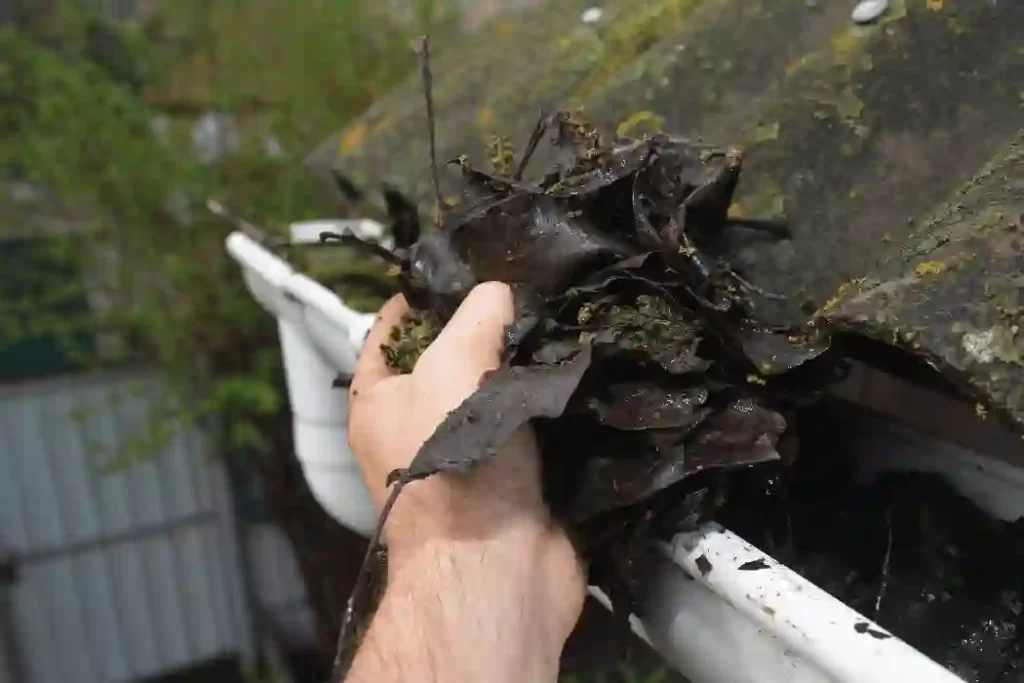The rainy season brings with it a sense of freshness and renewal. The pitter-patter of raindrops on the roof can create a cozy and comforting atmosphere. However, if your roof is not well-maintained, the rainy season can also bring about a host of problems. Water leaks, structural damage, and mold growth are just a few of the issues that can arise from a neglected roof. To ensure that your home remains safe and dry during the rainy season, it is crucial to prioritize roof cleaning. In this article, we will explore the importance of roof cleaning, discuss the steps involved, and provide useful tips to help you stay ahead of the rainy season.
Before we dive into the details, let’s understand why roof cleaning is essential. Your roof is the first line of defense against the elements, including rain. Over time, dirt, debris, leaves, and algae can accumulate on the surface of your roof, compromising its integrity and functionality. Regular cleaning and maintenance can help extend the lifespan of your roof and prevent costly repairs down the line.
Why Roof Cleaning is Important
Roof cleaning serves several important purposes. Firstly, it removes dirt, moss, and algae that can deteriorate the roofing material. These substances can retain moisture, leading to the growth of mold and mildew, which can weaken the roof structure. Secondly, cleaning the roof helps maintain its appearance, enhancing the overall curb appeal of your home. Lastly, a clean roof allows for proper drainage, preventing water from pooling and causing leaks. As part of your home renovation, don’t forget the importance of roof cleaning to maintain the integrity and appearance of your property’s top structure.

Signs That Your Roof Needs Cleaning
It’s crucial to be aware of the signs that indicate your roof requires cleaning. Look out for black streaks or dark patches on the roof surface, as these may be indicative of algae or moss growth. If you notice an accumulation of debris, such as leaves or twigs, it’s a clear sign that your roof needs attention. Additionally, if you see any signs of water damage inside your home, such as water stains or peeling paint on the ceiling, it’s likely that your roof requires cleaning and repairs.
Step-by-Step Guide to Roof Cleaning
Cleaning your roof involves several steps to ensure a thorough and effective process. Here’s a step-by-step guide to help you get started:
Safety First
Before you begin, prioritize safety by wearing appropriate protective gear such as gloves, goggles, and non-slip footwear. It’s also advisable to have a safety harness or work with a partner.
Clear the Roof
Remove any loose debris, such as leaves, twigs, and branches, using a soft-bristle broom or a leaf blower. Be gentle to avoid damaging the roof surface.
Step 3: Apply a Cleaning Solution
Prepare a cleaning solution using a mixture of water and mild detergent or a specialized roof cleaning product. Apply the solution to the roof surface using a low-pressure sprayer or a soft sponge.
Scrub and Rinse
Gently scrub the roof surface with a soft-bristle brush or a long-handled scrubber. Take care not to use excessive force to avoid damaging the roofing material. Rinse the roof thoroughly with clean water, ensuring that all traces of the cleaning solution are removed.
Inspect and Repair
After cleaning, inspect the roof for any signs of damage, such as cracked or broken shingles. Replace or repair damaged areas promptly to maintain the integrity of your roof.
Safety Precautions to Consider
When performing roof cleaning, it’s essential to prioritize safety. Here are some precautions to keep in mind:
- Use a sturdy ladder and ensure it is properly secured.
- Avoid working on the roof during unfavorable weather conditions, such as high winds or rain.
- Be cautious of electrical hazards and keep all equipment away from power lines.
- If you’re unsure or uncomfortable with roof cleaning, consider hiring a professional.
Choosing the Right Cleaning Method
The choice of cleaning method depends on the type of roofing material you have. Different materials, such as asphalt shingles, metal, or tiles, require specific cleaning techniques and solutions. It’s important to research and follow manufacturer recommendations or seek professional advice to avoid damaging your roof.
Professional Roof Cleaning vs. DIY
While DIY roof cleaning is an option for some homeowners, it’s worth considering the benefits of hiring a professional. Professional roof cleaners have the expertise, specialized equipment, and knowledge of safety protocols. They can ensure a thorough and efficient cleaning process while minimizing the risk of damage to your roof.
Tips for Maintaining a Clean Roof
To maintain a clean roof throughout the year, consider the following tips:
- Trim overhanging branches to prevent debris accumulation.
- Clean your gutters regularly to ensure proper water drainage.
- Inspect your roof for damage after severe weather events.
- Consider applying a roof coating or protective sealant to enhance durability.
The Benefits of Regular Roof Cleaning
Regular roof cleaning offers several benefits, including:
- Extending the lifespan of your roof.
- Preventing costly repairs and replacements.
- Improving energy efficiency by reducing heat buildup.
- Enhancing the overall appearance and value of your home.
Conclusion
As the rainy season approaches, it’s crucial to prioritize roof cleaning to protect your home from potential damage. Regular maintenance, thorough cleaning, and prompt repairs will help ensure that your roof remains in optimal condition. By following the steps outlined in this article and considering professional assistance when needed, you can stay ahead of the rainy season and enjoy a safe and leak-free home.

